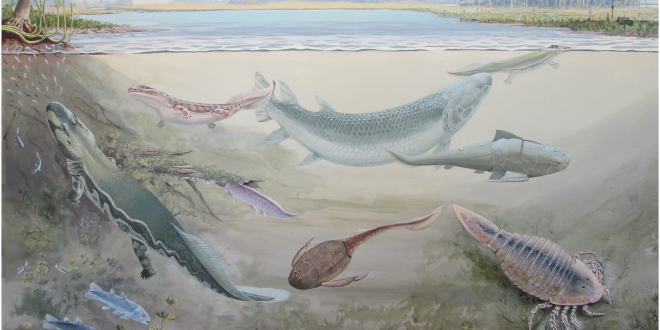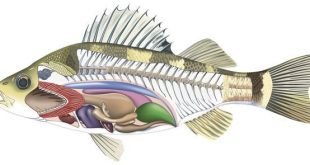The variety of freshwater fishes is striking, for they show radiations into different habitats with some of the most extraordinary adaptations of all fishes. The African mormyrids and the South American gymnotids, for example, have independently evolved amazingly specialized electrical signaling systems for use in crowded and turbid waters, and many freshwater fishes have developed different accessory respiratory devices to enable them to live in swamps where the oxygen content of the water is low. The radiations of the cichlid species flocks of the African lakes provide what are probably the best examples of evolution in progress at the species level.
Equally fascinating are the distributions of freshwater fishes, which are closely linked to the geological history of the regions they inhabit, and may, indeed, offer useful clues to the complex history of the changes in the Earth’s surface. For example, one scenario for the dominant freshwater group, the ostariophysi, following a relatively simple continental drift scheme, is that ostariophysans arose in Gondwanaland in the early Cretaceous before the South American and African plates separated.
What once seemed to be the most primitive ostariophysans now live in South America, hence the ostariophysi arose in the South American portion of Gondwanaland, and the modern African characoids and siluroids came from ancestors which reached West Africa before the two continents had finally separated. Antarctica, Australia, India, and Madagascar had already separated, hence ostariophysans in these regions came later, such as the two secondary freshwater Australian catfishes. The Laurasian plate also separated early, but the African plate contacted the Laurasian at the end of the Cretaceous, and ostariophysans were able to enter Laurasia. Cyprinoids then evolved from this ostariophysan stock and spread throughout Laurasia and most of Africa, although they did not manage to reach South America. Today, South-East Asia has the greatest diversity of cyprinoids.

It will hardly come as a surprise to the reader (who should by now be accustomed to the notoriously revisionist tendencies of fish taxonomists!) that this scenario has been challenged on various grounds. Thus, the “classical” idea that characoids gave rise to cyprinoids has been inverted by Fink and Fink (1981, 1996) to make cyprinoids the basal ostariophysan group, and rejecting the South American portion of Gondwanaland as the site of origin of the group. Additional work on the ostariophysan lineages in the past decade largely supports the Finks’ (1996) scheme, even if it does not explain why cyprinoids are absent from South America. The simpler distribution of living lungfishes shows (even if we had no fossil lungfish from Antarctica) that they evolved earlier than the ostariophysi, before the separation of Australia from Gondwanala.
 EazyBio: Educate, Elevate, Empower EazyBio: Educate, Elevate, Empower
EazyBio: Educate, Elevate, Empower EazyBio: Educate, Elevate, Empower




